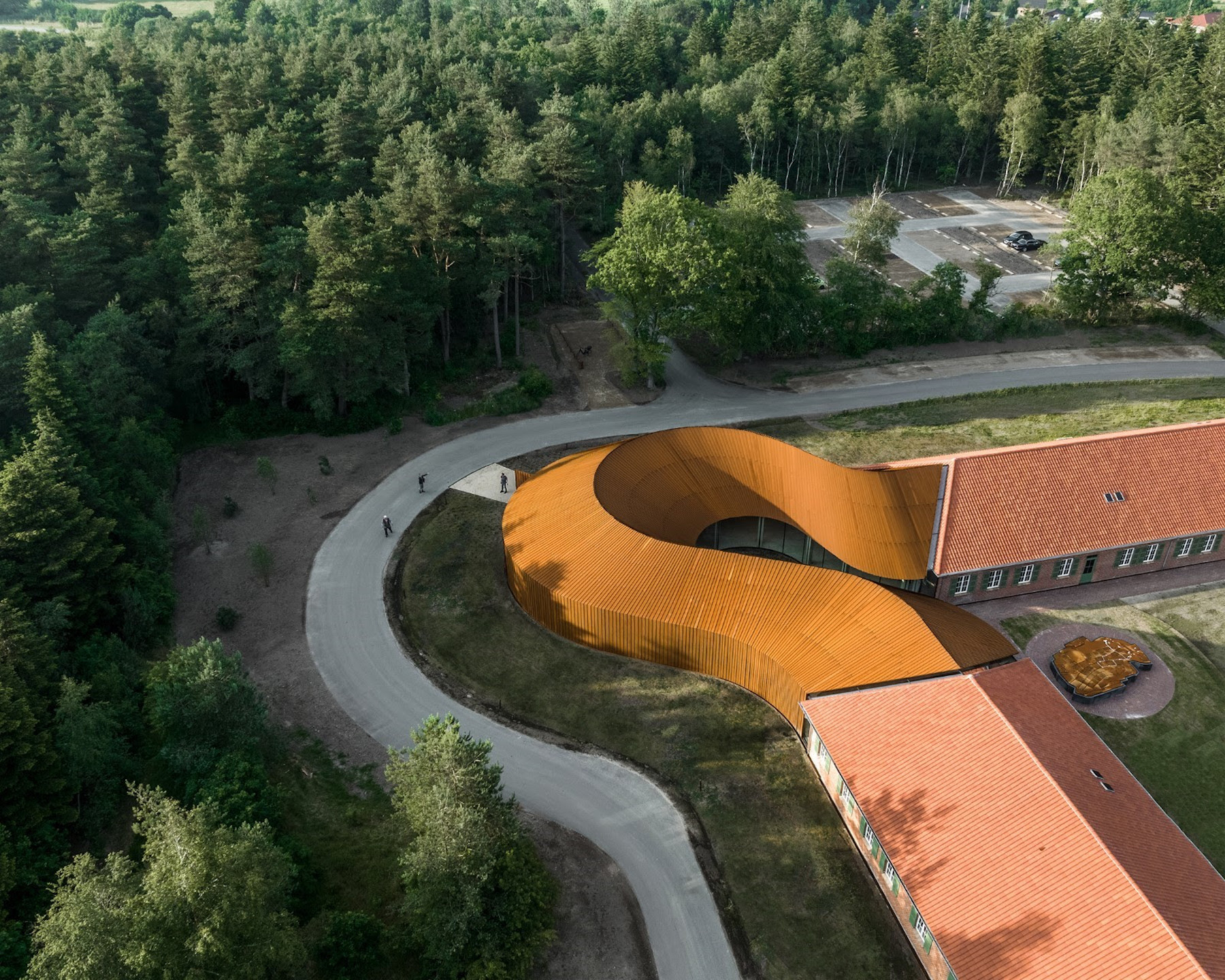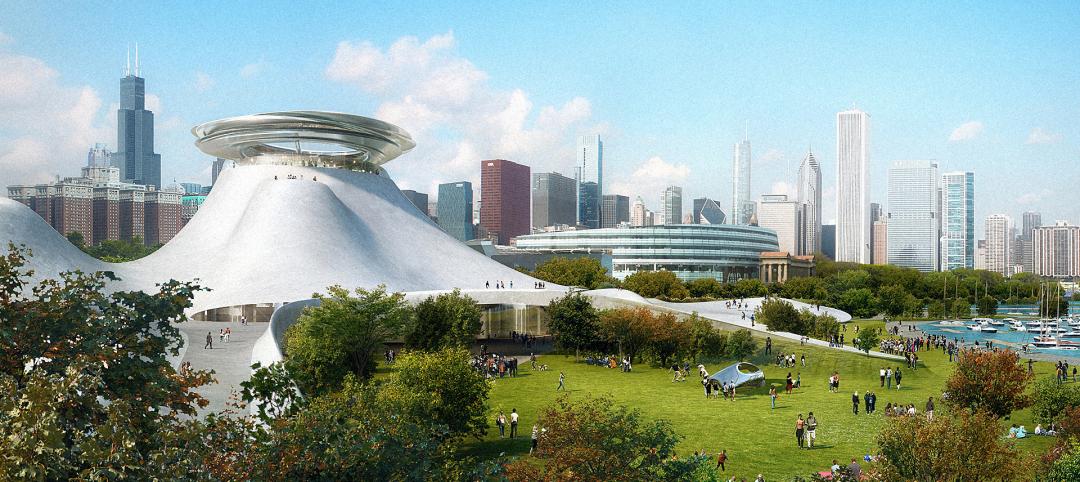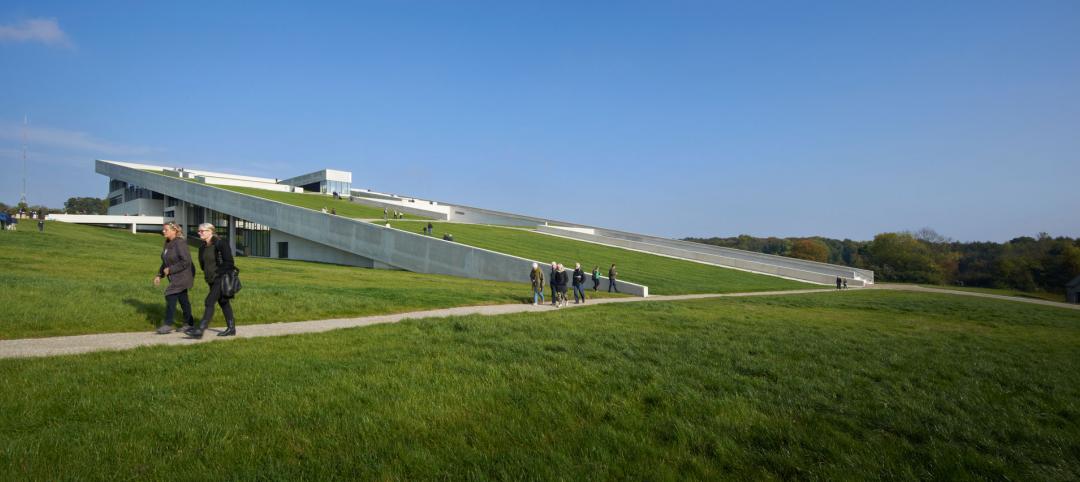Located on the site of Denmark’s largest World War II refugee camp, the new Refugee Museum of Denmark, FLUGT, tells the stories of refugees from the camp as well as refugees worldwide.
At 1,600 square meters (about 17,220 square feet), the museum was designed by BIG-Bjarke Ingels Group and exhibition designers Tinker Imagineers. Together, they adapted and extended one of the camp’s few remaining structures—a hospital—into the museum.
“FLUGT seeks to give a voice and a face to humans who have been forced to flee their homes and capture the universal challenges, emotions, and nuances shared by refugees then and today,” Claus Kjeld Jensen, museum director, said in a statement.
The former hospital comprises two long buildings. BIG connected the two structures by adding a soft curve-shaped volume, which serves as a welcoming structure and creates 500 square meters (about 5,380 square feet) of additional museum space. From the outside, the volume welcomes visitors into a seemingly closed entry hall. But inside, a floor-to-ceiling curved glass wall reveals a sheltered green courtyard and the forest, where the refugee camp used to be. From the entry hall, which functions as a lobby or a temporary exhibition space, guests continue to one of the museum wings.
The north wing’s exhibition area contains gallery spaces organized according to the hospital’s original flow. The south wing includes a flexible conference room, smaller exhibition spaces, cafe, and back-of-house functions.
“We went into this project with all our heart to address one of the world’s greatest challenges—how we welcome and care for our fellow world citizens when they are forced to flee,” Bjarke Ingels, founding partner, BIG, said in the statement.
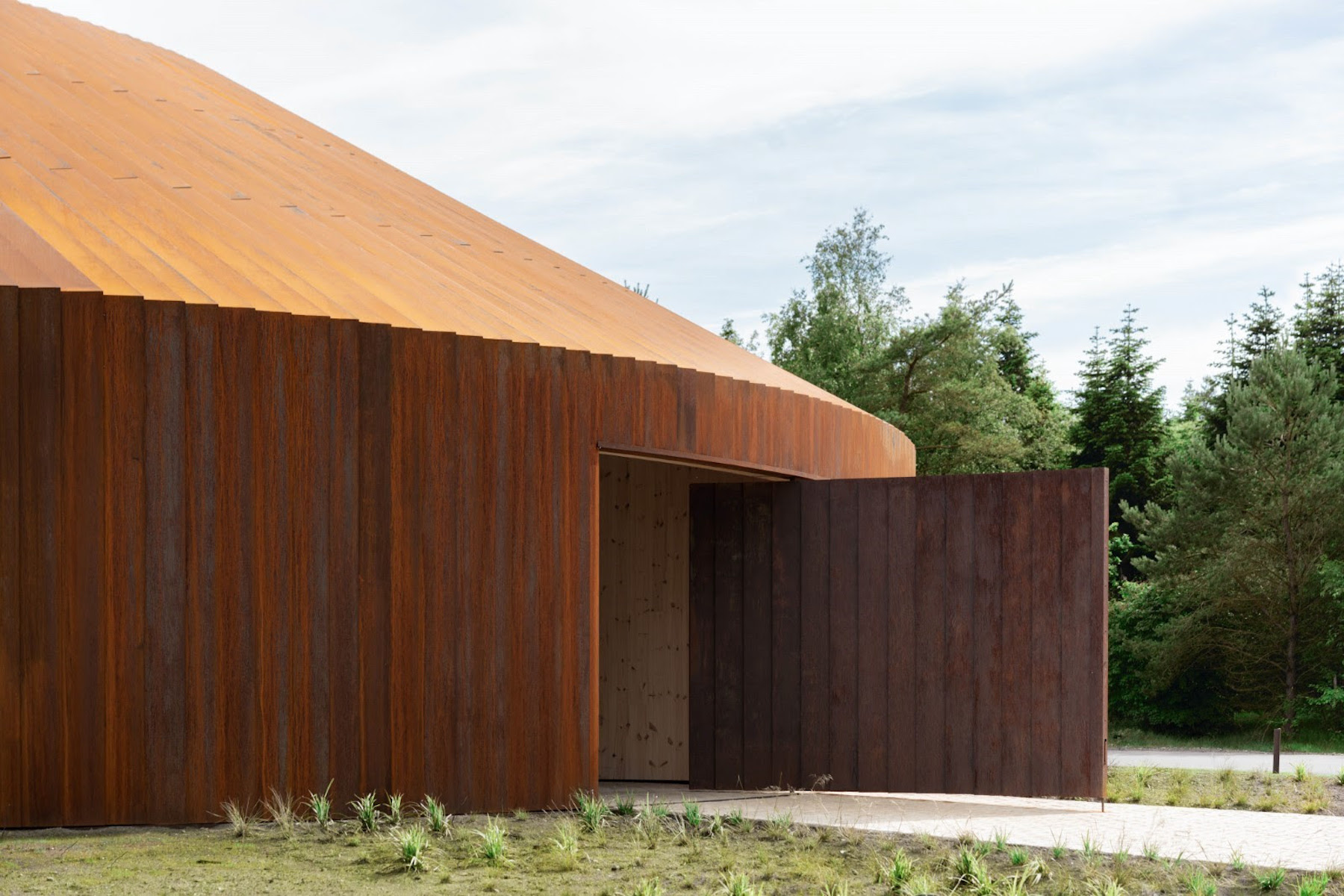
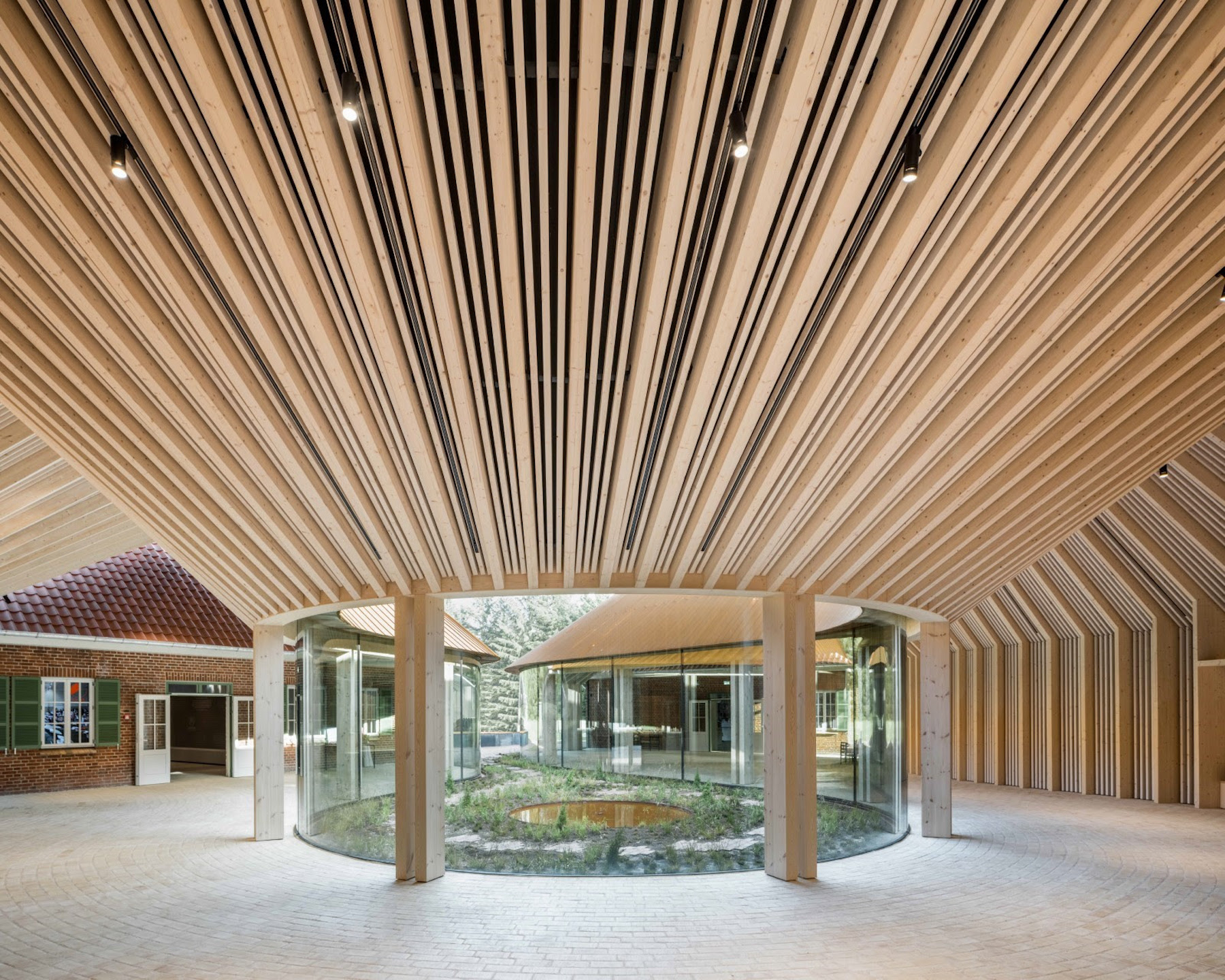
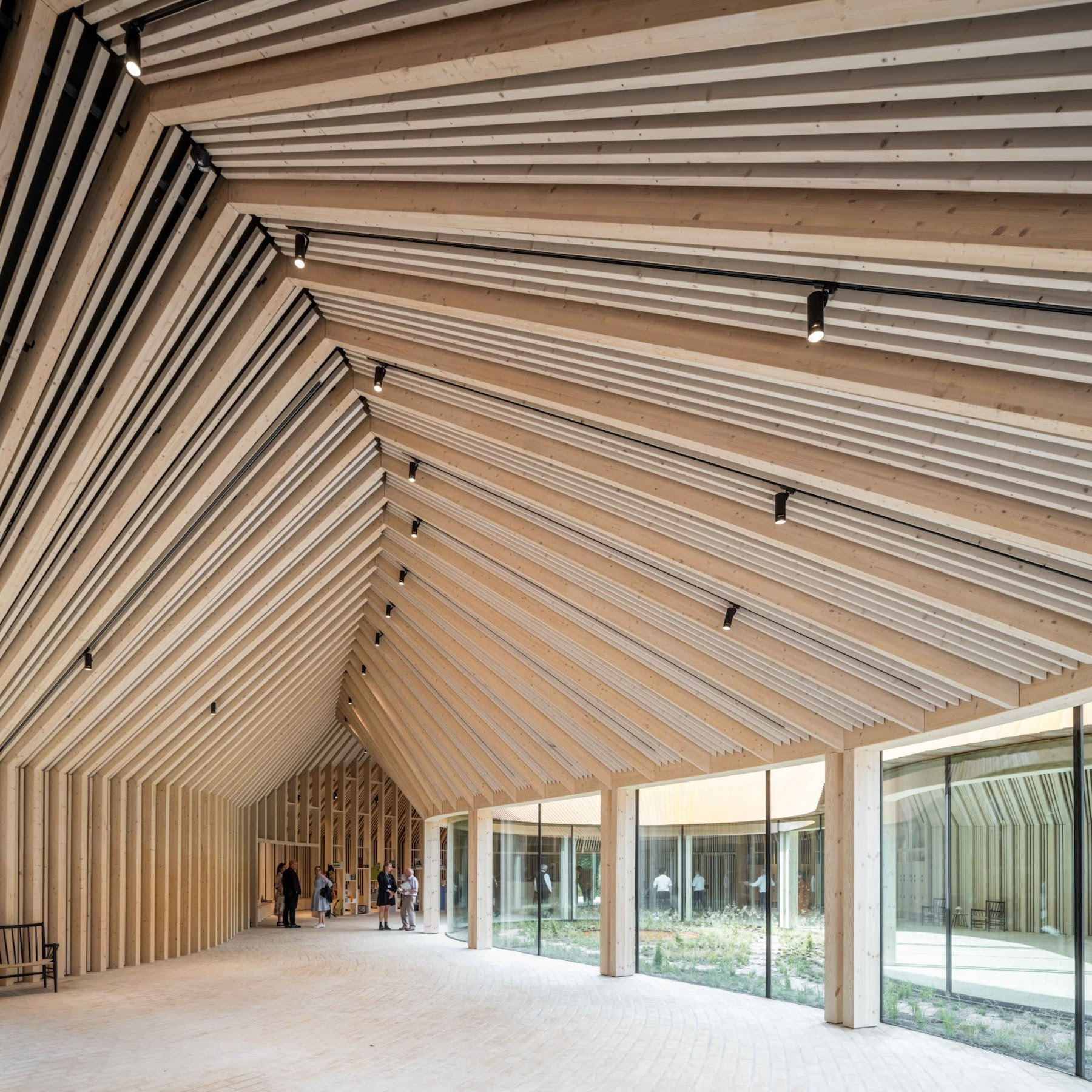
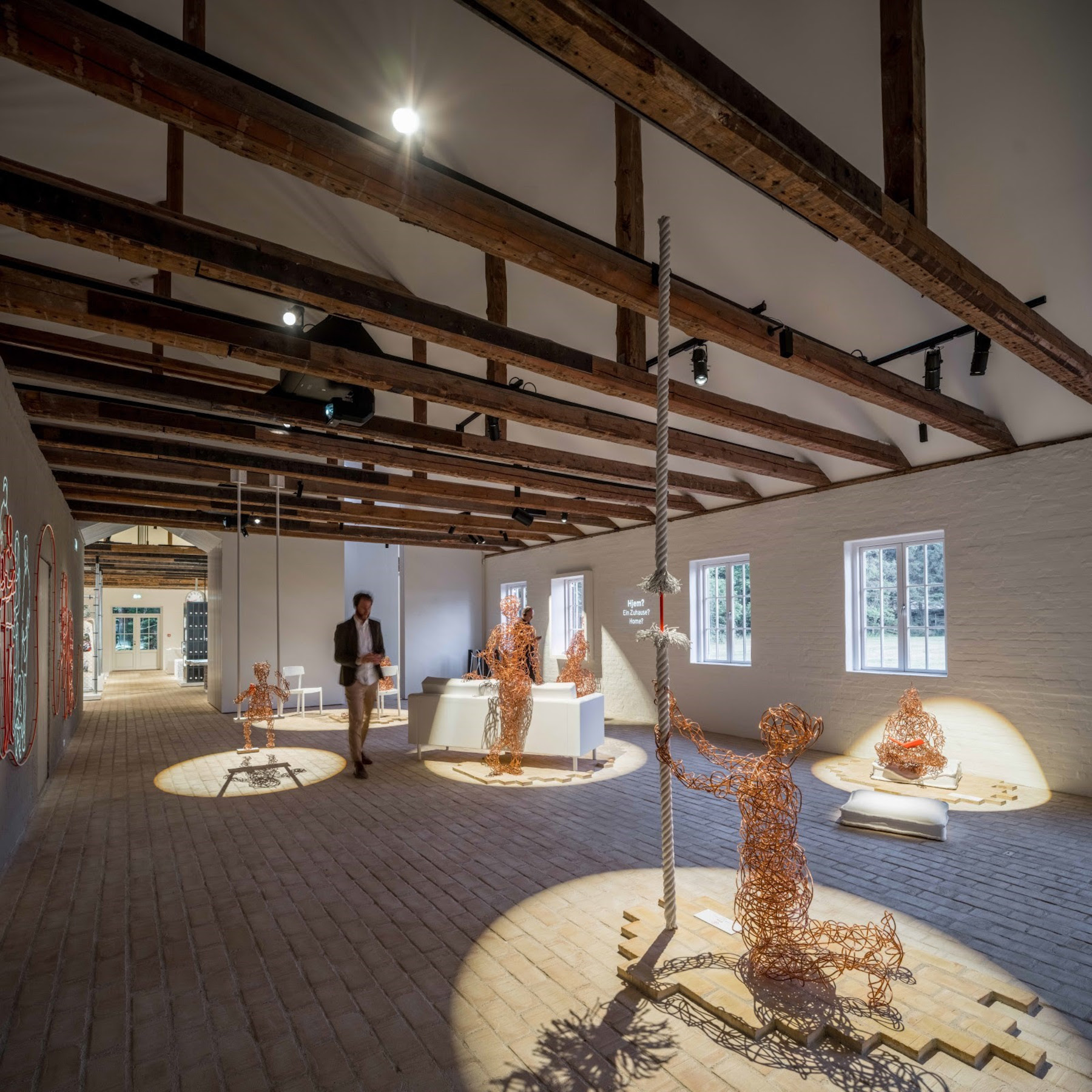
Related Stories
| Nov 14, 2014
Bjarke Ingels unveils master plan for Smithsonian's south mall campus
The centerpiece of the proposed plan is the revitalization of the iconic Smithsonian castle.
| Nov 12, 2014
Chesapeake Bay Foundation completes uber-green Brock Environmental Center, targets Living Building certification
More than a decade after opening its groundbreaking Philip Merrill Environmental Center, the group is back at it with a structure designed to be net-zero water, net-zero energy, and net-zero waste.
| Nov 7, 2014
NORD Architects releases renderings for Marine Education Center in Sweden
The education center will be set in a landscape that includes small ponds and plantings intended to mimic an assortment of marine ecologies and create “an engaging learning landscape” for visitors to experience nature hands-on.
| Nov 5, 2014
The architects behind George Lucas' planned Chicago museum unveil 'futuristic pyramid'
Preliminary designs for the $300 million George Lucas Museum of Narrative Art have been unveiled, and it looks like a futuristic, curvy pyramid.
| Nov 3, 2014
IIT names winners of inaugural Mies Crown Hall Americas Prize
Herzog & de Meuron's iconic 1111 Lincoln Road parking garage in Miami Beach, Fla., is one of two winners of the $50,000 architectural prize.
| Oct 29, 2014
Diller Scofidio + Renfro selected to design Olympic Museum in Colorado Springs
The museum is slated for an early 2018 completion, and will include a hall of fame, theater, retail space, and a 20,000-sf hall that will showcase the history of the Olympics and Paralympics.
| Oct 23, 2014
Prehistory museum's slanted roof mimics archaeological excavation [slideshow]
Mimicking the unearthing of archaeological sites, Henning Larsen Architects' recently opened Moesgaard Museum in Denmark has a planted roof that slopes upward out of the landscape.
| Oct 16, 2014
Perkins+Will white paper examines alternatives to flame retardant building materials
The white paper includes a list of 193 flame retardants, including 29 discovered in building and household products, 50 found in the indoor environment, and 33 in human blood, milk, and tissues.
| Oct 15, 2014
Harvard launches ‘design-centric’ center for green buildings and cities
The impetus behind Harvard's Center for Green Buildings and Cities is what the design school’s dean, Mohsen Mostafavi, describes as a “rapidly urbanizing global economy,” in which cities are building new structures “on a massive scale.”
| Oct 12, 2014
AIA 2030 commitment: Five years on, are we any closer to net-zero?
This year marks the fifth anniversary of the American Institute of Architects’ effort to have architecture firms voluntarily pledge net-zero energy design for all their buildings by 2030.


